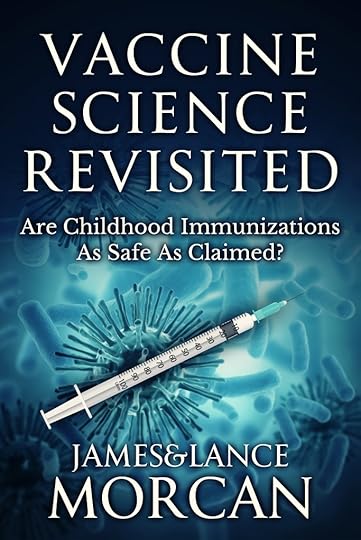‘Vaccine Science Revisited’ highlights use of infant monkeys to assess impact of CDC’s childhood vaccine schedule
There was a very interesting study published in PubMed in 2010 some 10 years after it was conducted into the CDC’s recommended childhood vaccine schedule we feel hasn’t gotten the recognition it deserves. More than two decades since the study was done, as far as we can tell, discussions about it and its results are almost non-existent.
My co-author James Morcan and I refer to this study in a chapter titled ‘Definitely maybe science’ in our book ‘VACCINE SCIENCE REVISITED: Are Childhood Immunizations as Safe as Claimed?’
The study randomly selected 16 infant rhesus monkeys and divided them into two groups. One group of 12 monkeys received the CDC’s then-recommended childhood vaccine schedule at the same rate American children would. The remaining four infant monkeys, which comprised the control group, received placebo (saline) vaccines according to the same schedule. (It would be interesting if they added a second control group using the placebos used in vaccine safety studies today. We are very curious to know how it would compare).

This was a longitudinal study lasting from 1994 to 1999 to follow the vaccine schedule in a proper timeline. The study found the vaccinated monkeys had a much “greater total brain volume” than the average healthy brain. They also observed that the amygdala in the vaccinated monkeys didn’t mature with time as it was supposed to. The amygdala, incidentally, plays an important role in social interactions.
Maybe it’s not so surprising they also observed that in the vaccinated monkeys the opioid antagonist diprenorphine (DPN) levels never lowered throughout the study. In the placebo group, the DPN levels decreased noticeably. One function of DPN is to block social interaction. What this means is the research showed that the social behavior of those monkeys that received the actual vaccines, where the DPN levels did not decrease, turned anti-social.
We found there was at least one more study undertaken to verify the association between DPN and social behavior. Performed in 1981, the authors of that study believe the release of opioids in the brain encourages social interactions. So, when the body fails to decrease the amount of the antagonist DPN, it not only blocks the opioids that encourage social interactions, but it blocks the desire to socially interact.
We were unable to find published studies that show a link between DPN and autism. However, we did look a little closer into DPN. Apparently, there are three different variations of opioid receptors: mu, µ; delta, δ; and kappa, κ. We are only interested in the kappa (κ1 and κ2) receptors. There are more kappa receptors in the brain than any other opioid receptor. Not surprisingly, you’ll find these receptors in the amygdala.
The paper states:
“The κ opioid receptors have been implicated in several clinical brain disorders, including drug abuse, epilepsy, Tourette’s syndrome, and Alzheimer’s disease.”
What DPN does is bind to the kappa receptors and that’s how it accumulates in the amygdala. So, it makes sense how DPN could cause problems when it doesn’t go away with time…
Excerpt ends.

‘VACCINE SCIENCE REVISITED’ is available via Waterstones UK & Europe bookstores, public libraries and via Amazon where it has a global review rating of 4.7 out of 5 stars. https://www.amazon.com/VACCINE-SCIENCE-REVISITED-Immunizations-Underground/dp/0473521598/
**********************************************************



